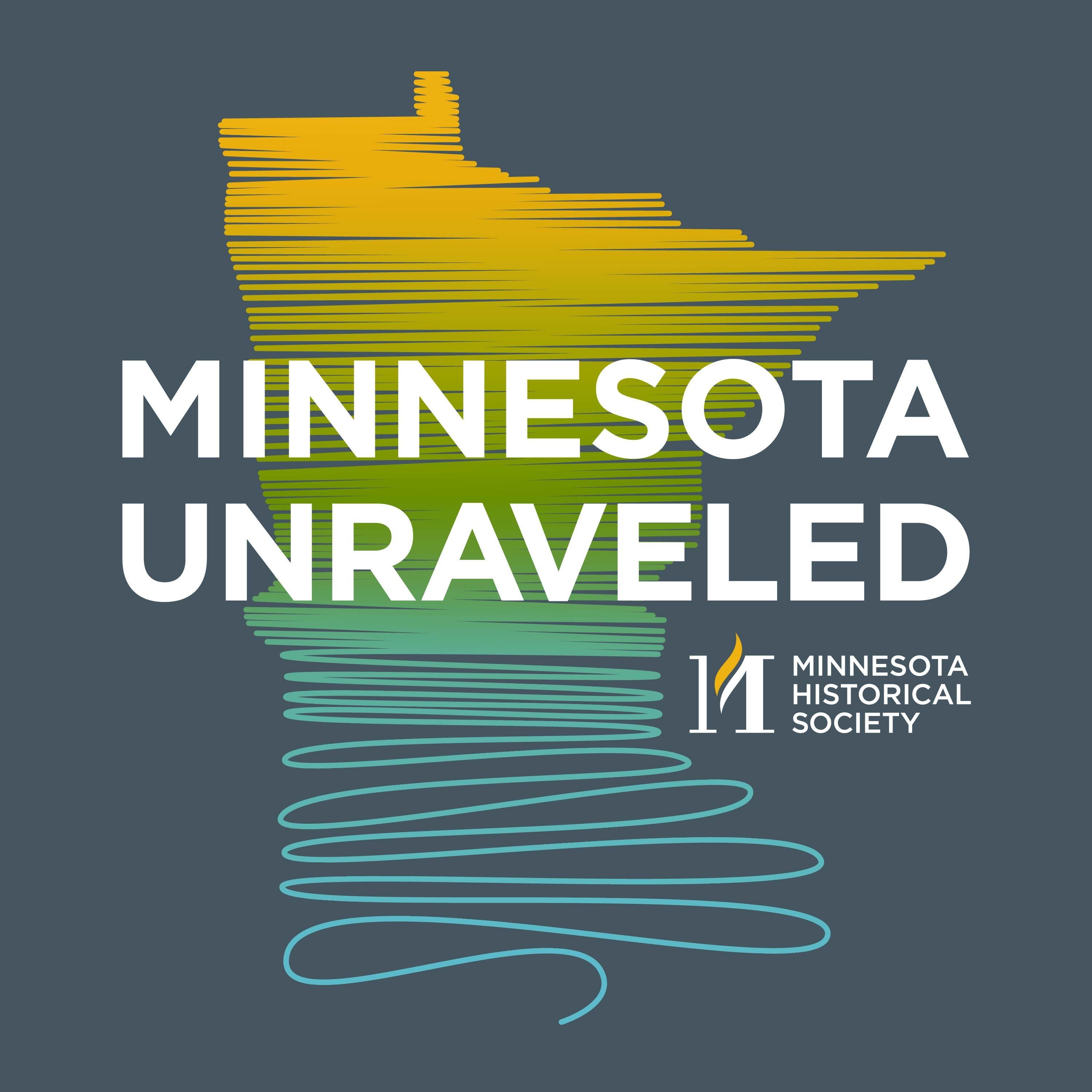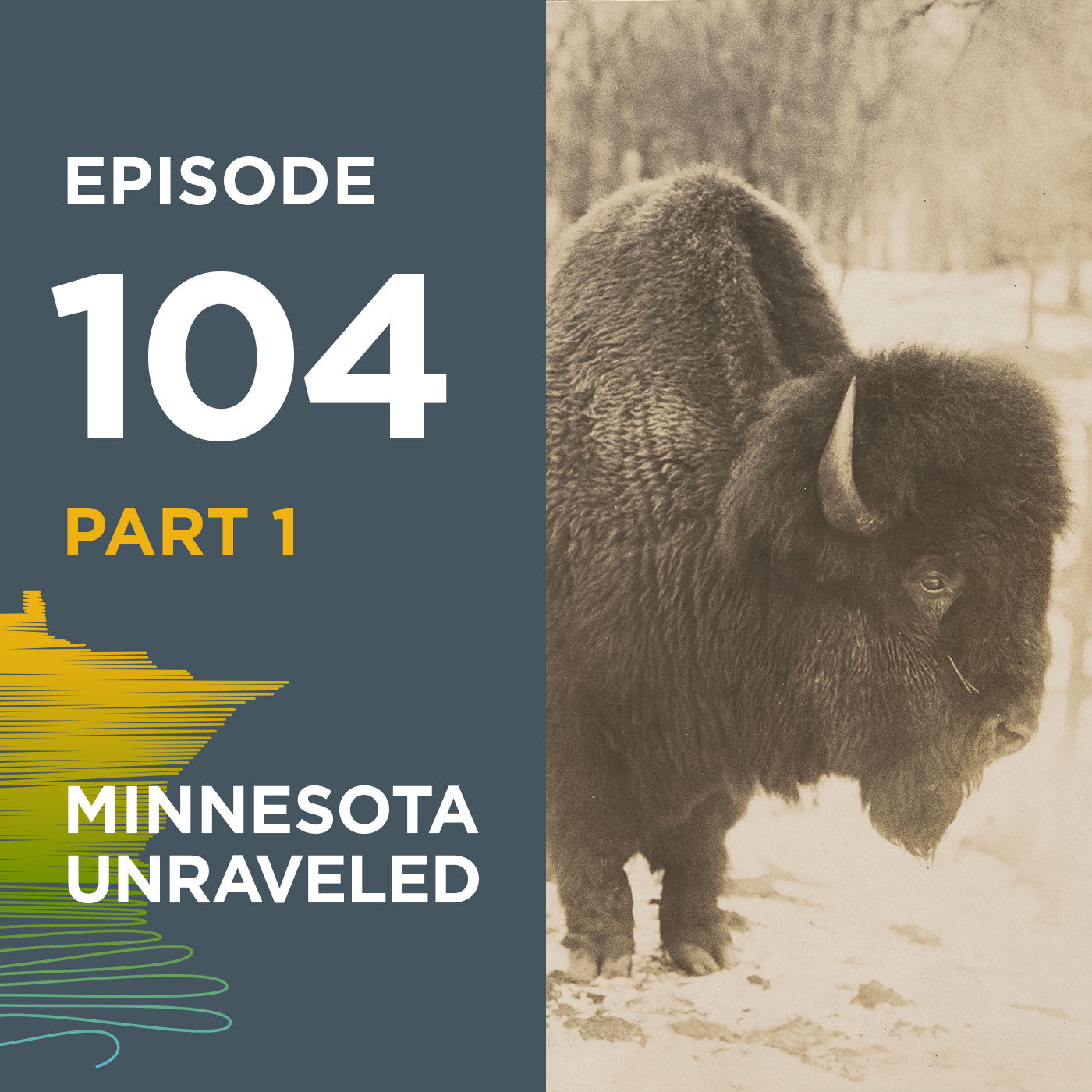Part One: Searching for Bison in Minnesota History (episode 104)
Think “buffalo” and you probably think “Wild West,” “Yellowstone”, or “Great Plains.” In this two-part episode, historian and host Dr. Chantel Rodriguez uncovers why you should also think “Minnesota”. The history of bison in the North Star State is a long one, but not one that’s well-known.
Through conversations with Native natural resource manager Ferin Davis Anderson (enrolled citizen of the Turtle Mountain Band of Chippewa/Ojibwe/Anishinaabe/Mitchifs in North Dakota), conservation biologist Mary Mallinger, and historian Pete DeCarlo, Chantel fills in the picture of bison’s history with Minnesota’s prairies—and people.

Transcripts
Guests

Ferin Davis Anderson
Ferin Davis Anderson is an environmental scientist, author, and an enrolled citizen of the Turtle Mountain Band of Chippewa/Ojibwe/Anishinaabe/Mitchifs in North Dakota. She works as the Supervisor of Environmental Sciences for the Shakopee Mdewakanton Sioux Community’s Land and Natural Resources Department where she is responsible for stewarding and restoring natural areas for the SMSC.
Anderson weaves traditional knowledge and western science together to make more holistic management decisions. Her novel, Wildfire: The Culture, Science, and Future of Fire, examines how Indigenous people, farmers, and forestry departments have used fire to manage resources and how climate change is impacting the future of fire.

Peter DeCarlo
Peter DeCarlo is a driven storyteller dedicated to educating the public and bringing positive change to communities. With nearing 20 years of historical research experience, DeCarlo’s experiences assist with his goal of using history to understand the present and make a better future.
DeCarlo has a master’s in American history from the University of Wisconsin-Eau Claire, and is currently attending North Dakota State University for a master’s in Natural Resource Management. He is also the author of Fort Snelling at Bdote and "Loyalty Within Racism: The Segregated Sixteenth Battalion of the Minnesota Home Guard During World War I".

Mary Mallinger
Mary Mallinger is a Conservation and Engagement Biologist working for the Minnesota Zoo, with a master’s in Biological and Environmental Sciences from the University of Rhode Island. She has spent an extensive amount of time with the Minnesota Zoo researching bison and their effects on Midwestern land.
Primary Sources
Hennepin, Louis. A Description of Louisiana. John Gilmary Shea, 1880.
Lesueur, Pierre-Charles. “Lesueur’s Voyage Up the Mississippi.” Wisconsin Historical Collections, 16 (1902), 177-193.
Pike, Zebulon Montgomery. The Expeditions of Zebulon Montgomery Pike: To Headwaters of the Mississippi River, Through Louisiana Territory, and in New Spain, During the Years 1805-6-7. Francis P. Harper, 1895.
Radisson, Pierre-Esprit. “Radisson’s Account of His Third Journey.” In, Louise Phelps Kellog, ed., Early Narratives of the Northwest, 1634-1699. Charles Scribner Sons, 1917.
Schoolcraft, Henry Rowe. Narrative Journal of Travels Through the Northwestern Regions of the United States: Extending from Detroit Through the Great Chain of American Lakes to the Sources of the Mississippi River, Performed as Member of the Expedition Under Governor Cass in the Year 1820. E. & E. Hosfrod, 1821.
Thompson, David. David Thompson’s Narrative. Greenwood Press, 1968.
William T. Hornaday. Map Illustrating the Extermination of the American Bison. Government Printing Office, 1889.
Secondary Sources
Bison Field Campaign. Bison Maps.
Colpitts, George. Pemmican Empire : Food, Trade, and the Last Bison Hunts in the North American Plains, 1780-1882. Cambridge University Press, 2015.
Flores, Dan. “Bison Ecology and Bison Diplomacy: The Southern Plains from 1800 to 1850.” The Journal of American History 78, no. 2 (September 1991): 465-485.
Duncan, Dayton. “Is it ‘Buffalo’ or ‘Bison’ Yes.” PBS, 2024.
Erlandson, Henry. “When did wild bison disappear from Minnesota?” Minneapolis Star Tribune, February 14, 2020.
Foster, Martha Horroun. “‘Just Following the Buffalo’: Origins of a Montana Métis Community.” Great Plains Quarterly 26, no. 3 (Summer 2006): 185-202.
Haines, Francis. The Buffalo: The Story of American Bison and Their Hunters from Prehistoric Times to the Present. University of Oklahoma Press, 1995.
Isenberg, Andrew. “Social and Environmental Causes and Consequences of the De struction of the Bison,” Revue française d'études américaines, no. 70, L'écologie aux États-Unis (October 1996), 15-27.
__________. “The Returns of the Bison: Nostalgia, Profit, and Preservation,” Environmental History 2 No. 2 (April 1997), 179-196.
Knapp, Alan K., et. al. “The Keystone Role of Bison in North American Tallgrass Prairie,” BioScience 49, no. 1 (January 1999): 39-50.
Minnesota Department of Natural Resources. Prairie Grassland Biome.
National Park Service. Bison Bellows: America’s New National Mammal. November 2, 2017.
__________ . Bison Bellows: Back Home on the Range. November 6, 2017.
Truett, Joe C., et. al. “Managing Bison to Restore Biodiversity,” Great Plains Research 11, no. 1 (Spring 2001): 123-144.
Turtle Mountain - Souris Plains Heritage Association. Métis Bison Hunters.
Zontek, Ken. “A Relationship from Time Immemorial.” In Bison Nation: American Indian Efforts to Restore the Bison, 1–32. University of Nebraska Press, 2007.
 MNHS Podcast
Dec 19, 2024 1:15:18 PM
MNHS Podcast
Dec 19, 2024 1:15:18 PM


